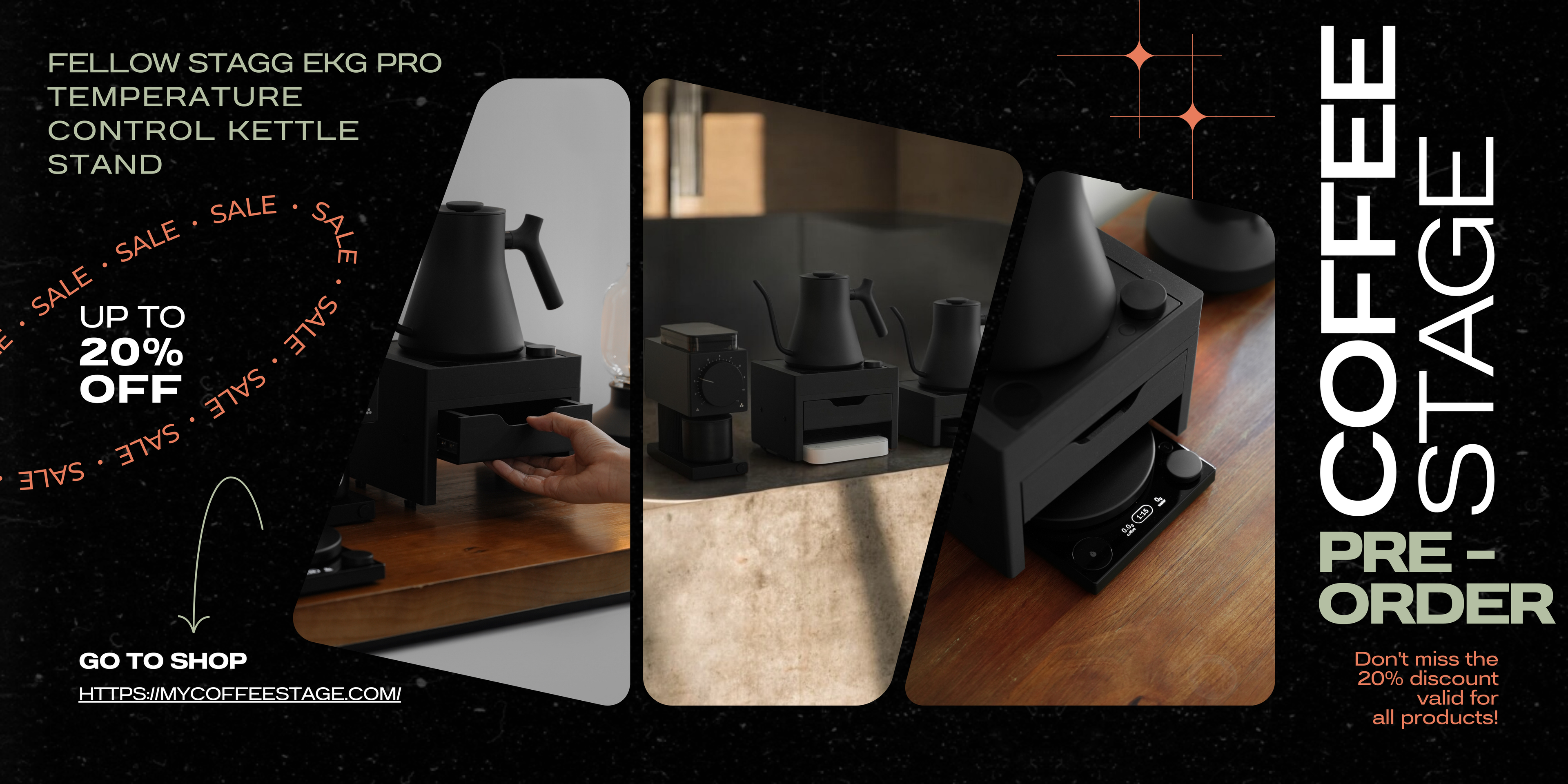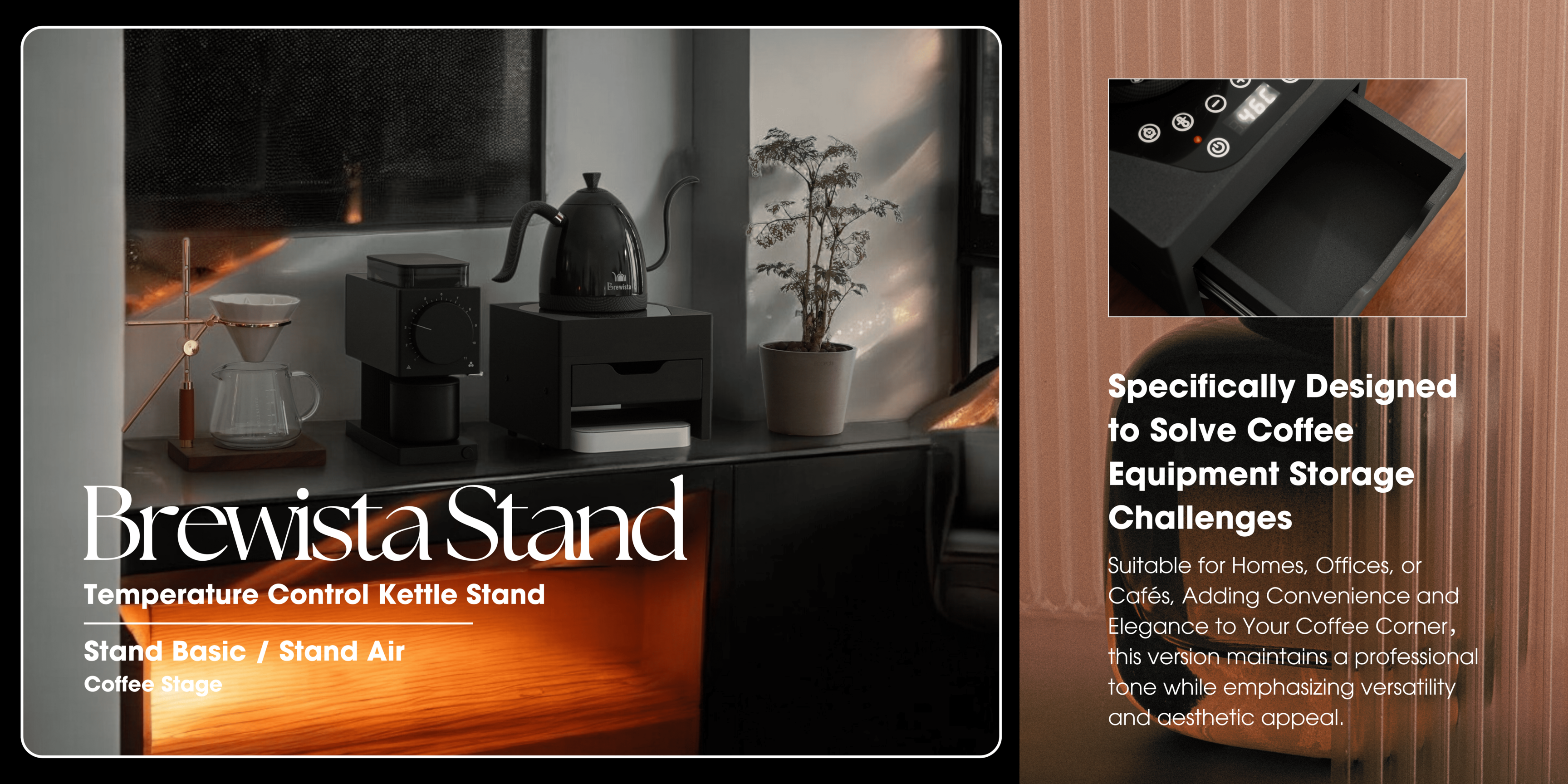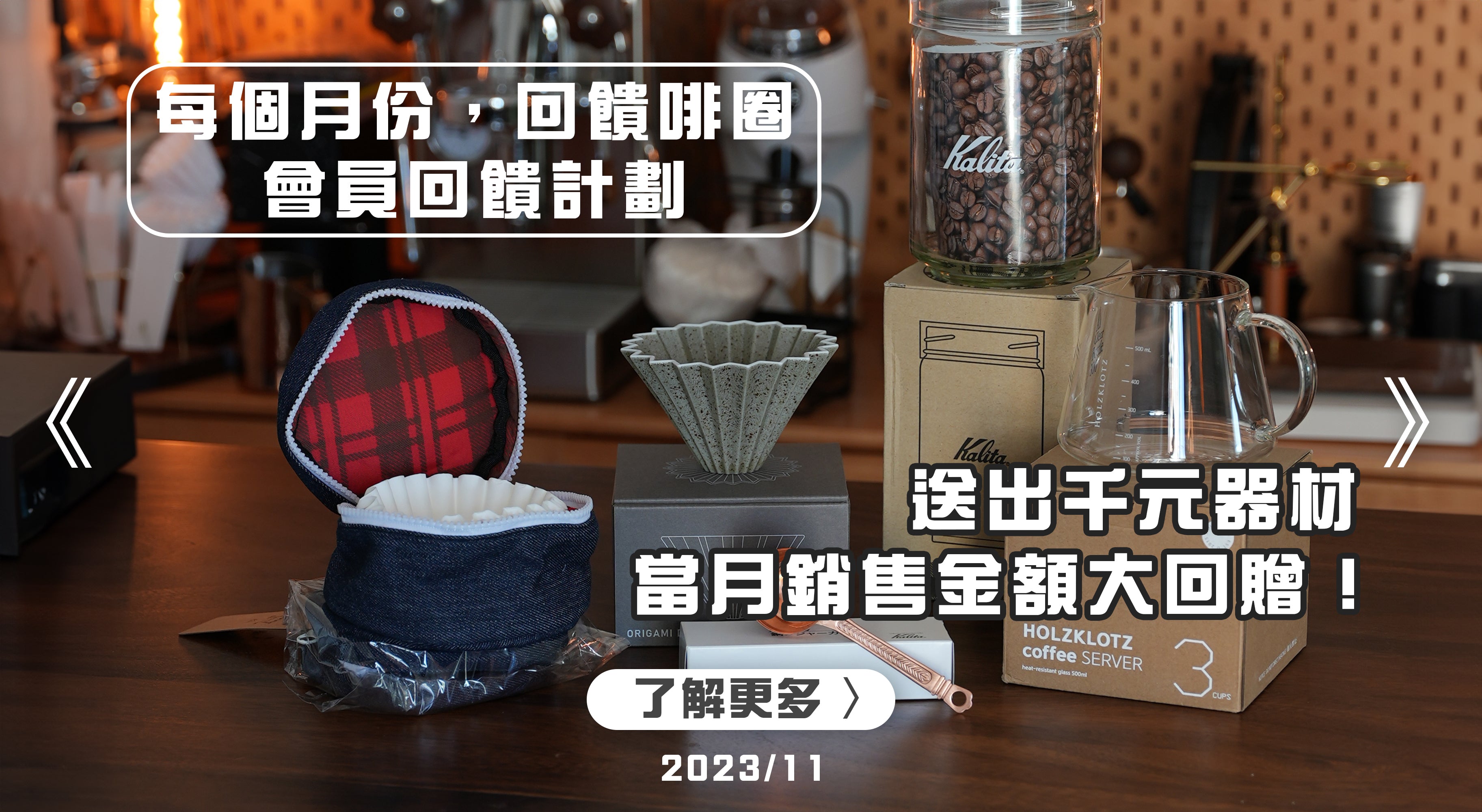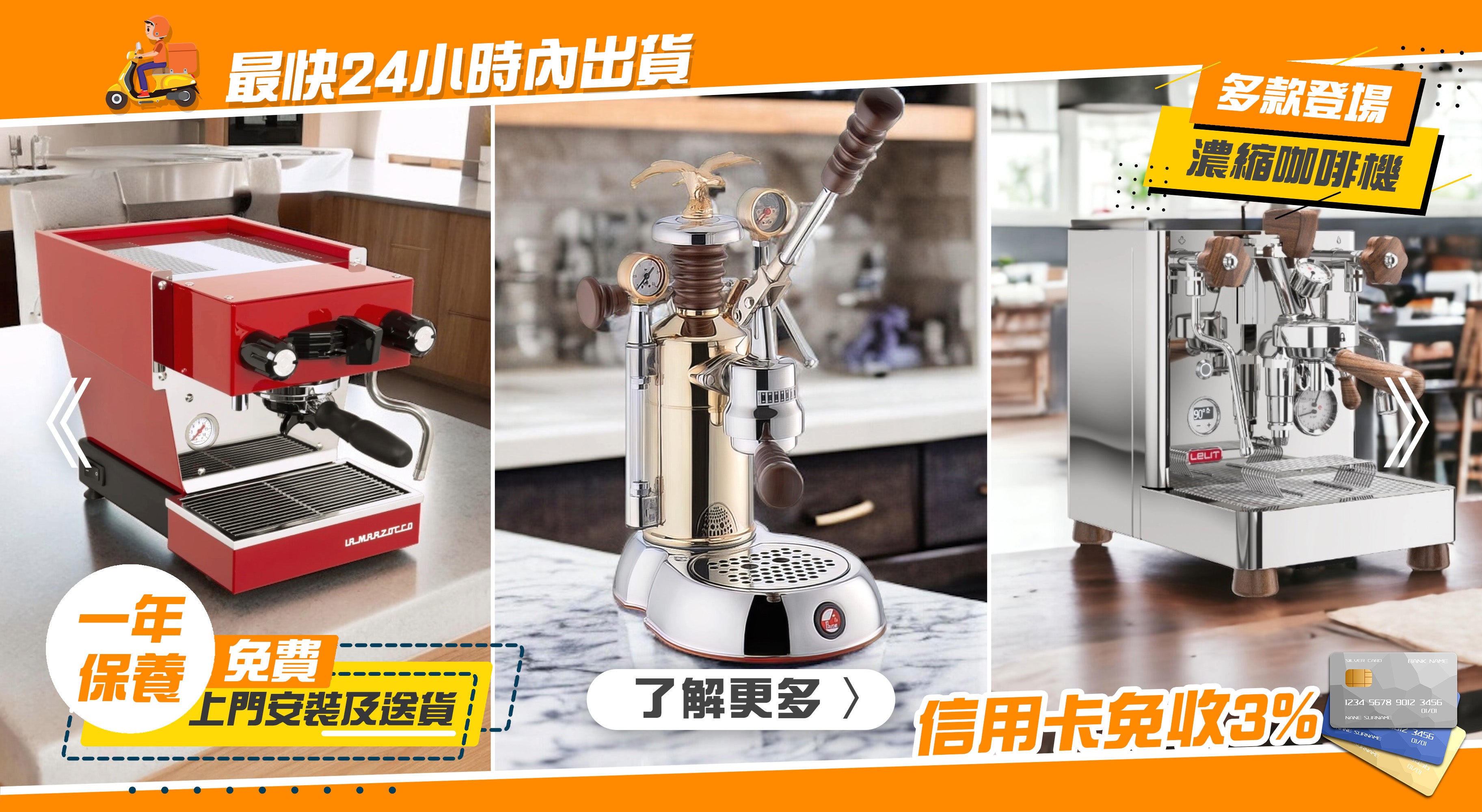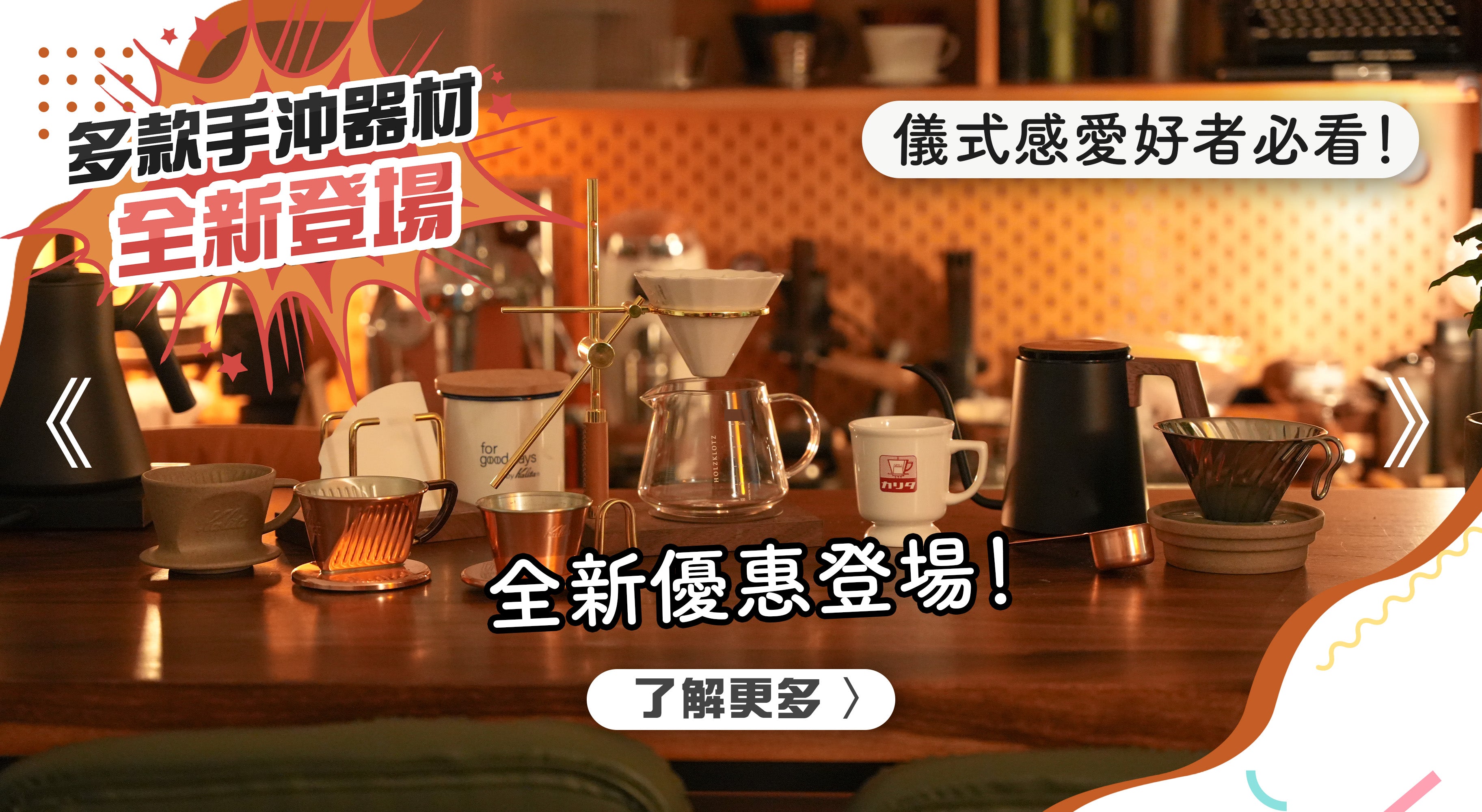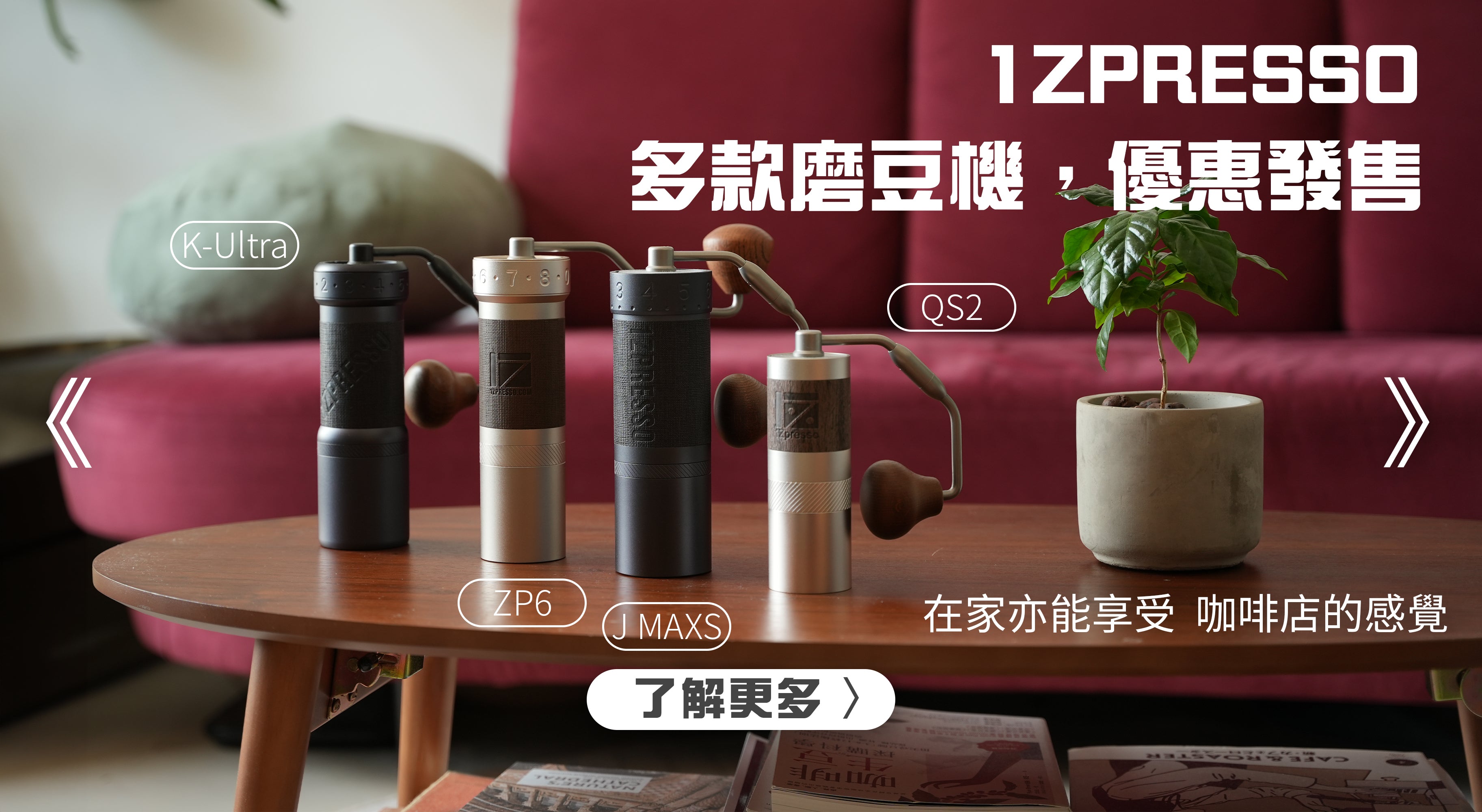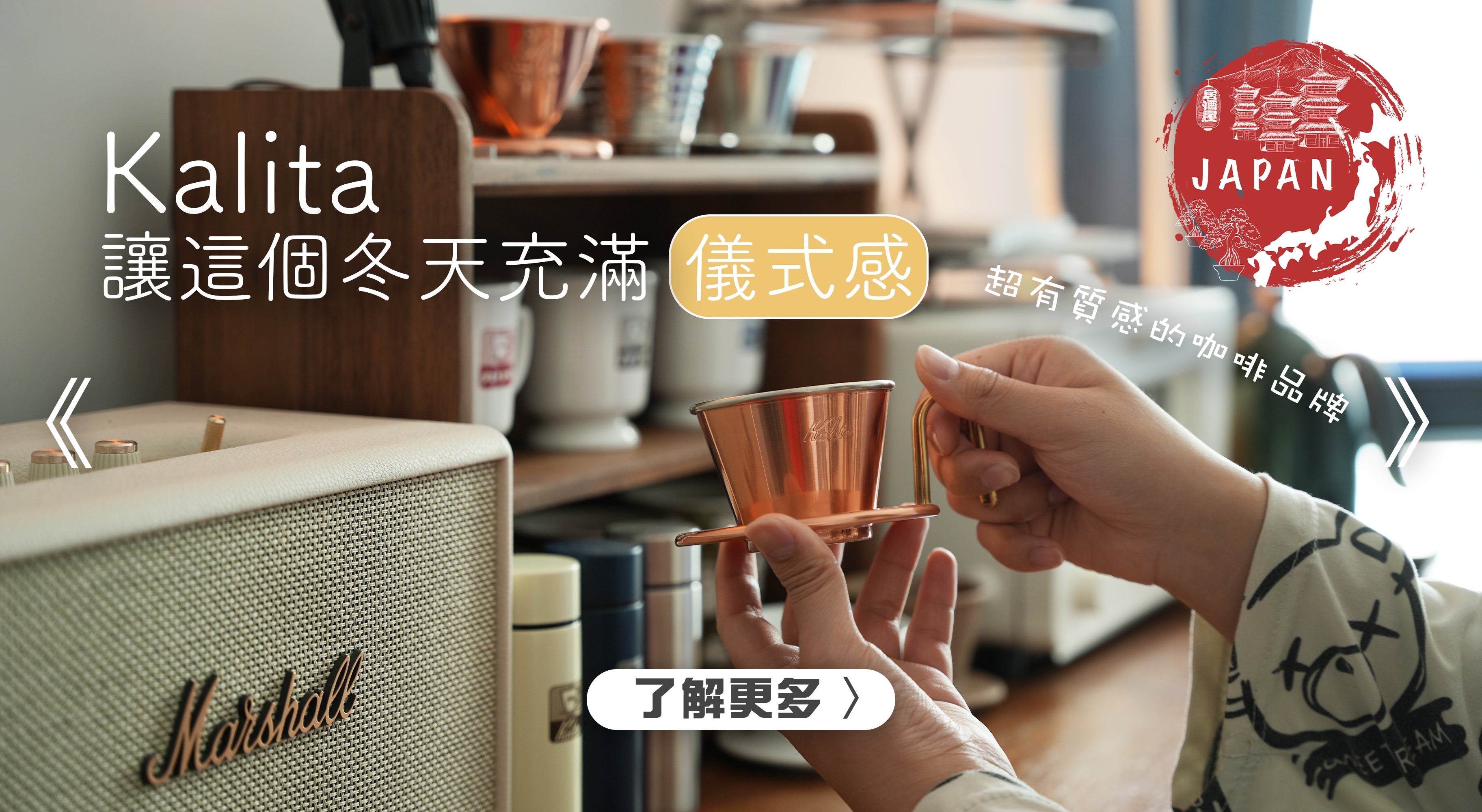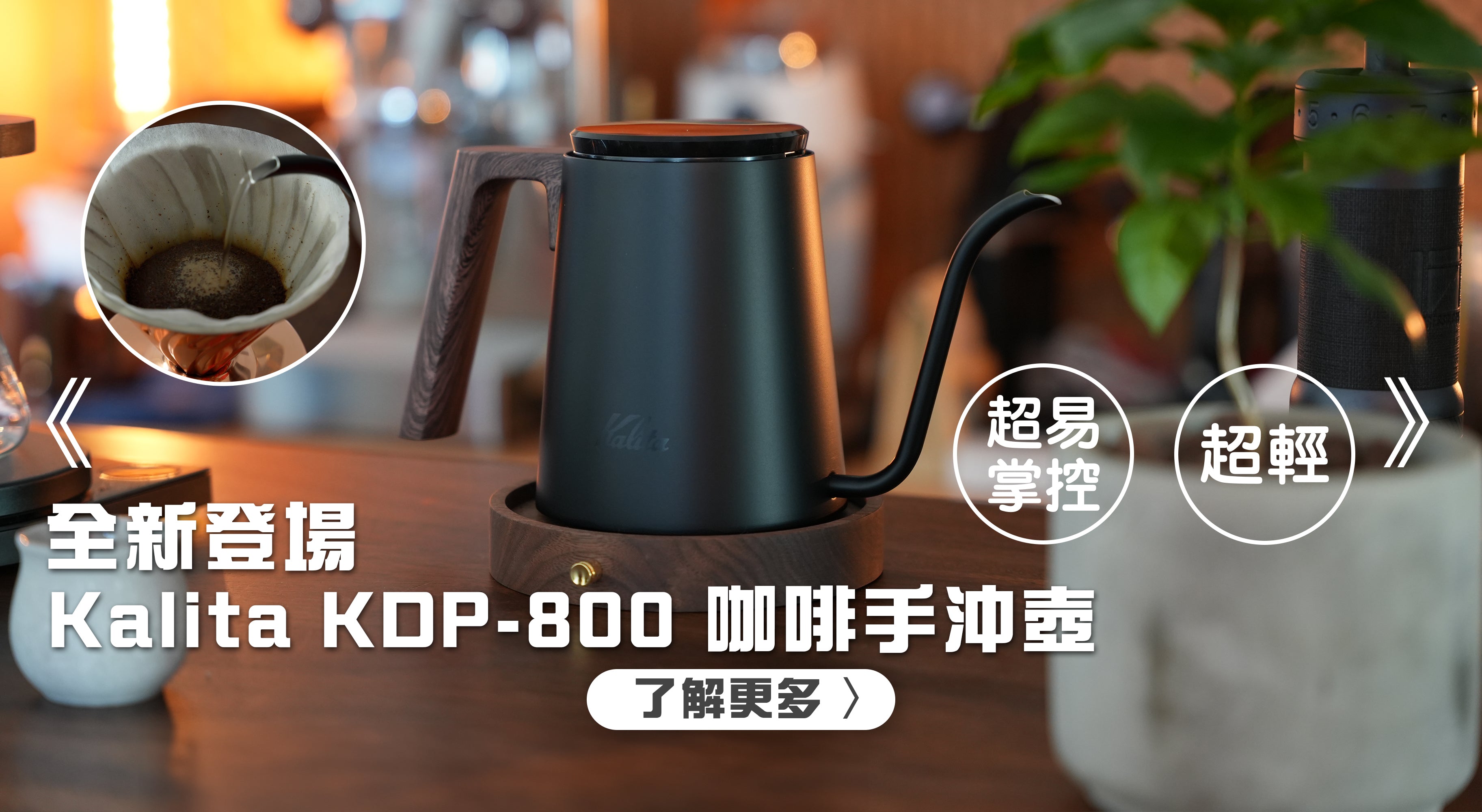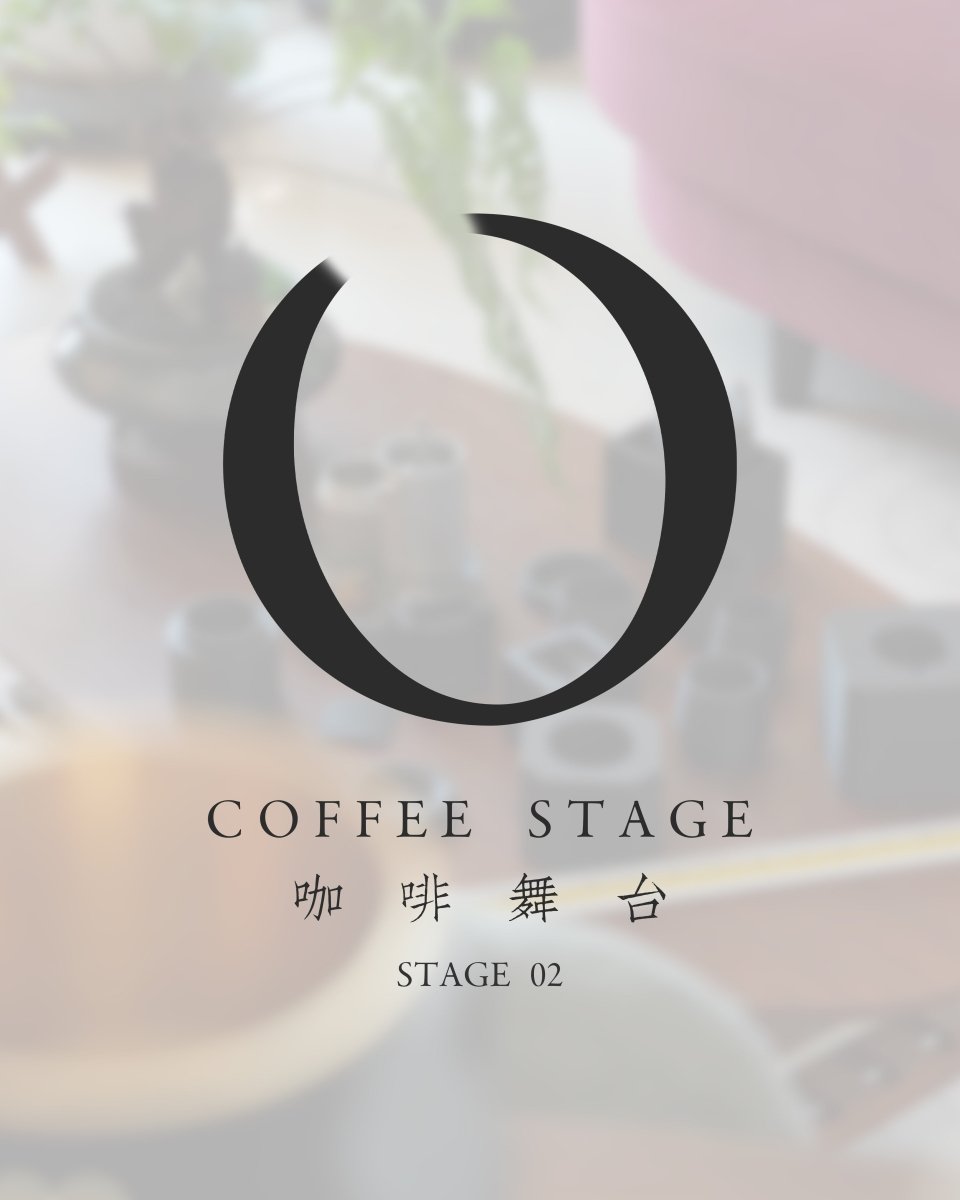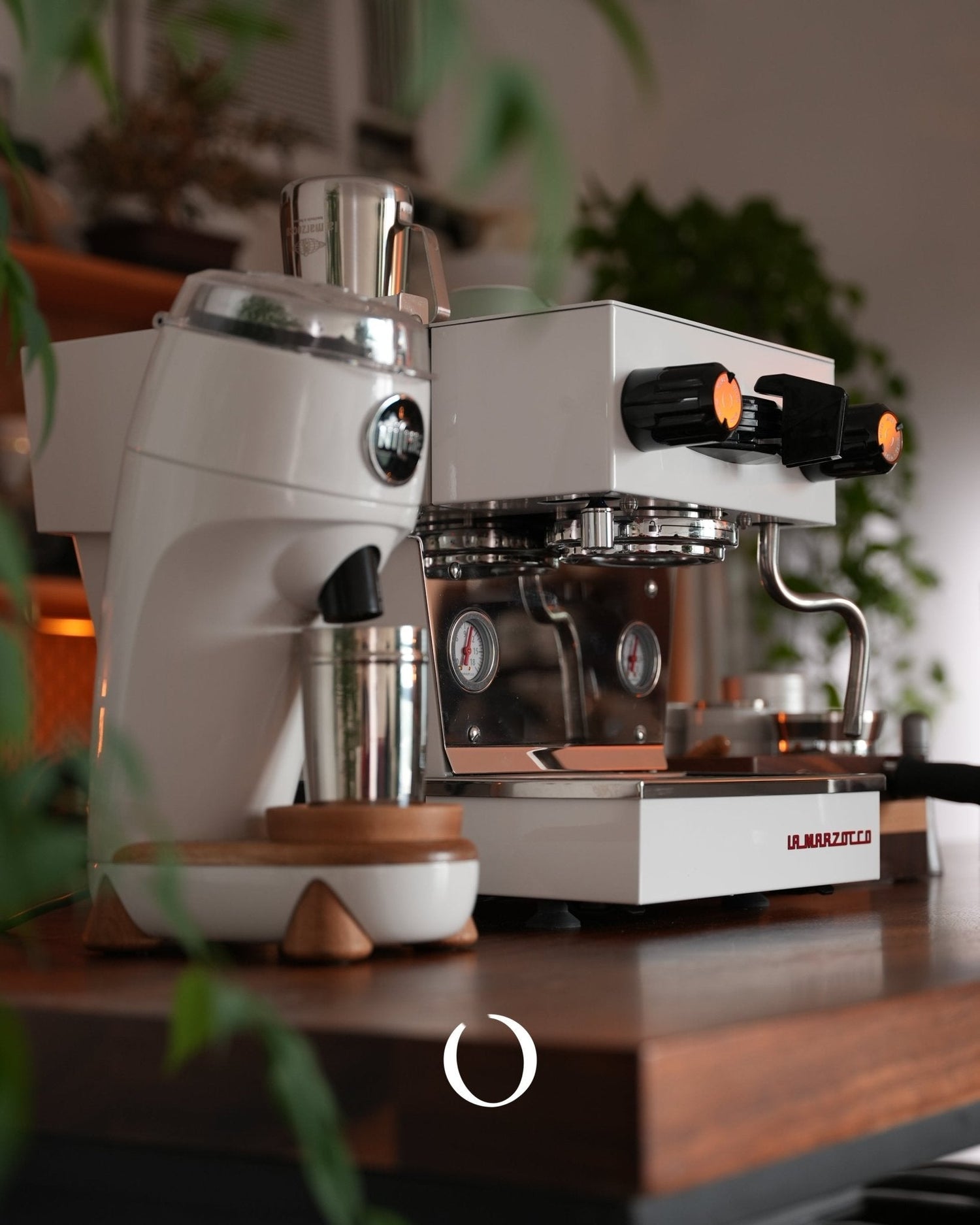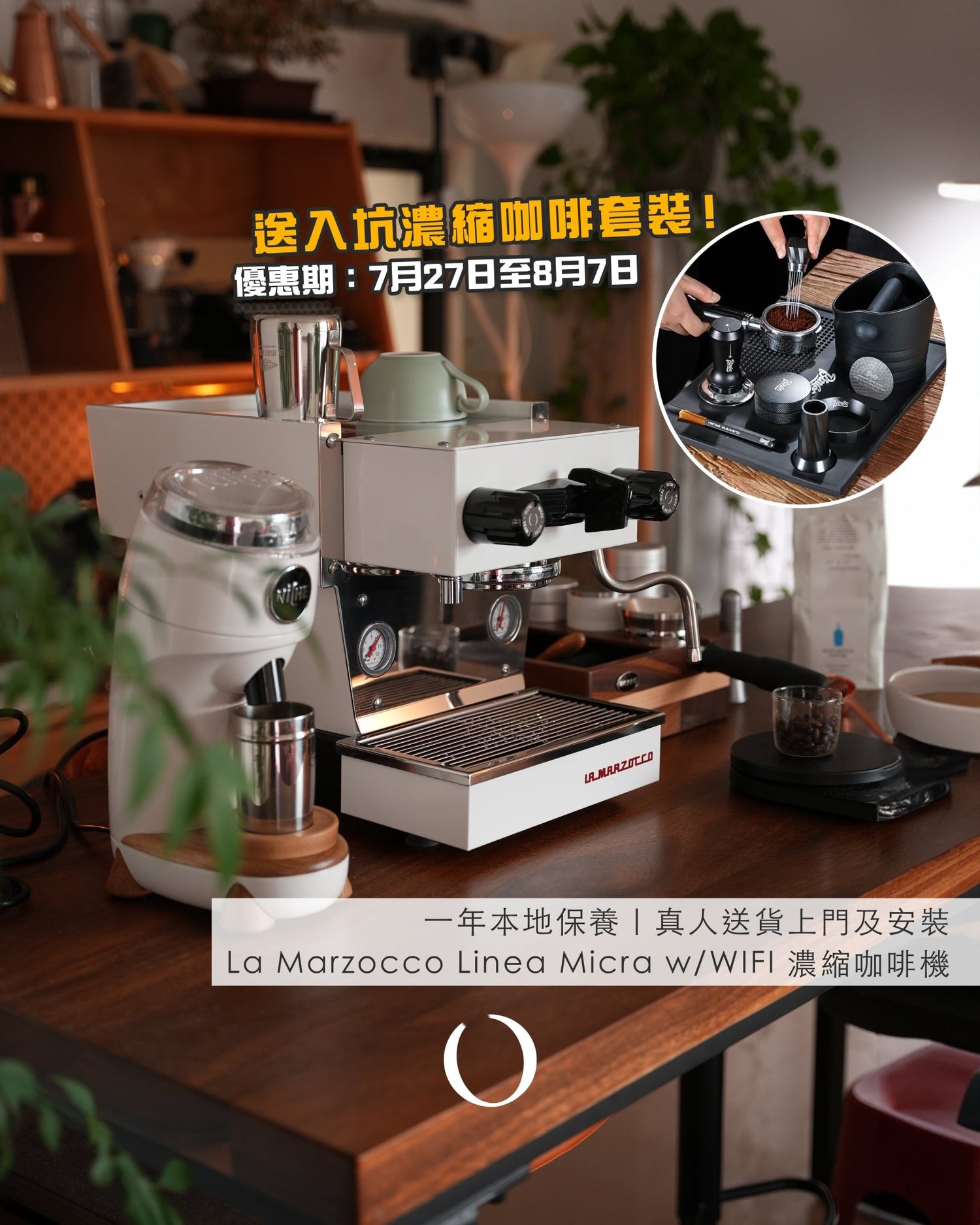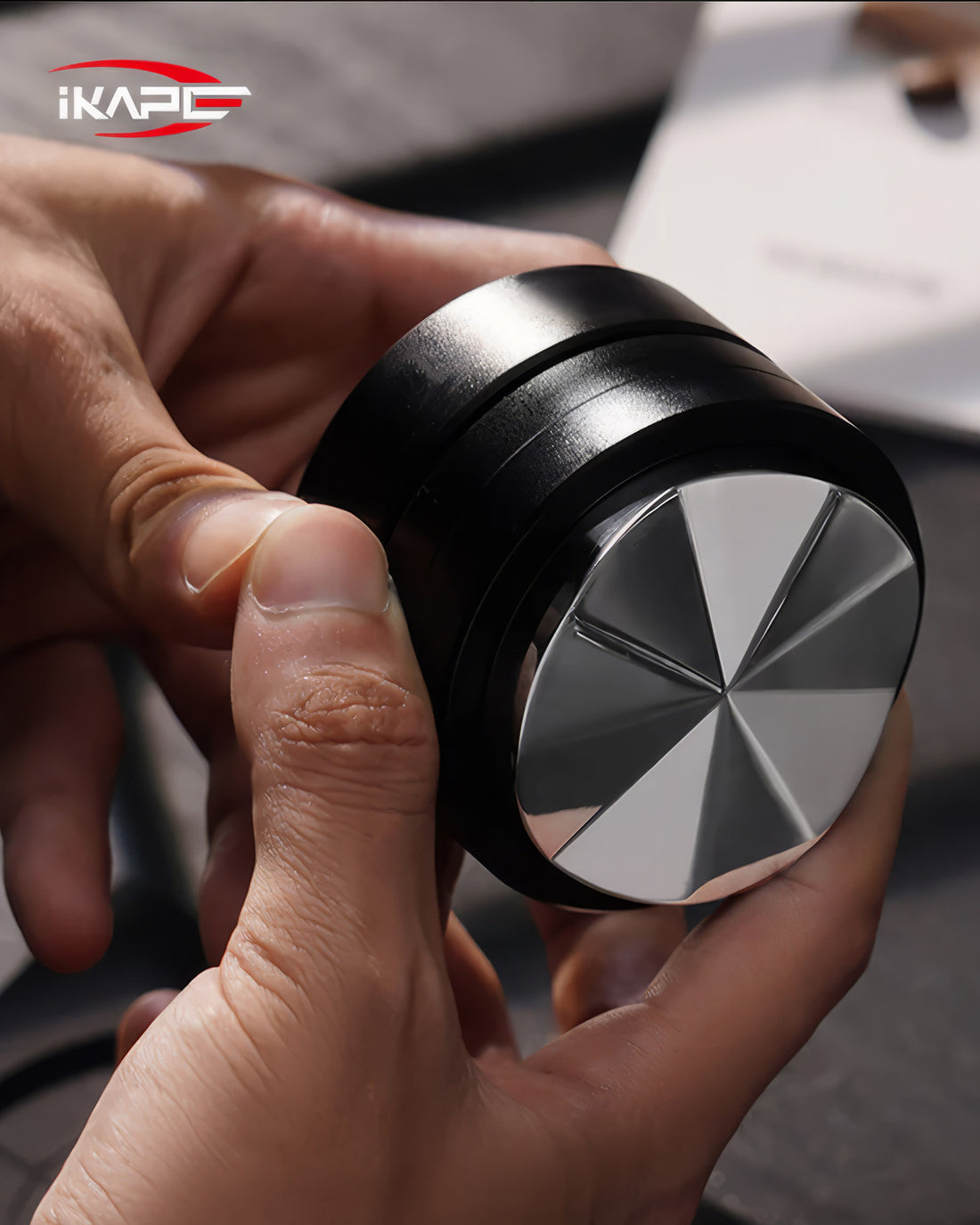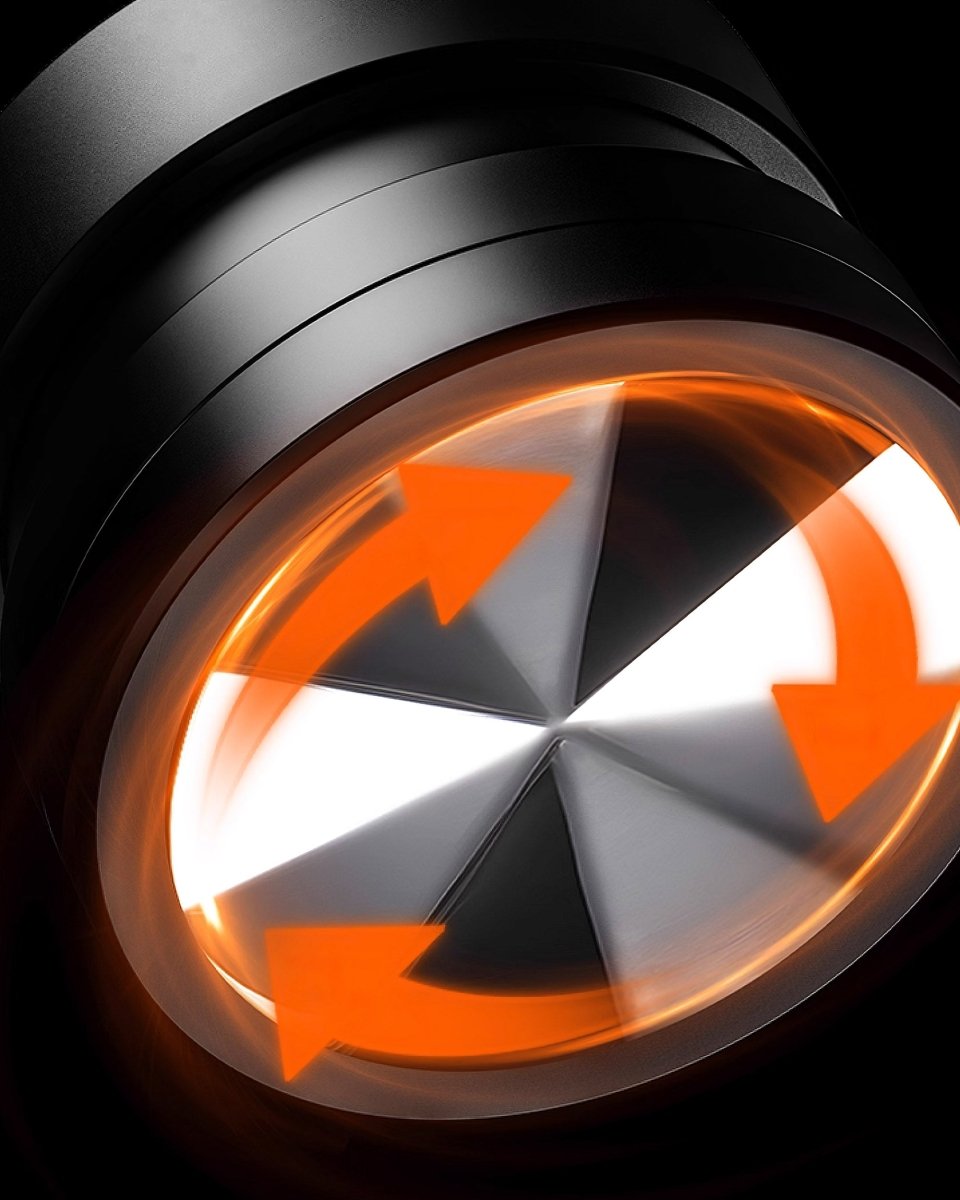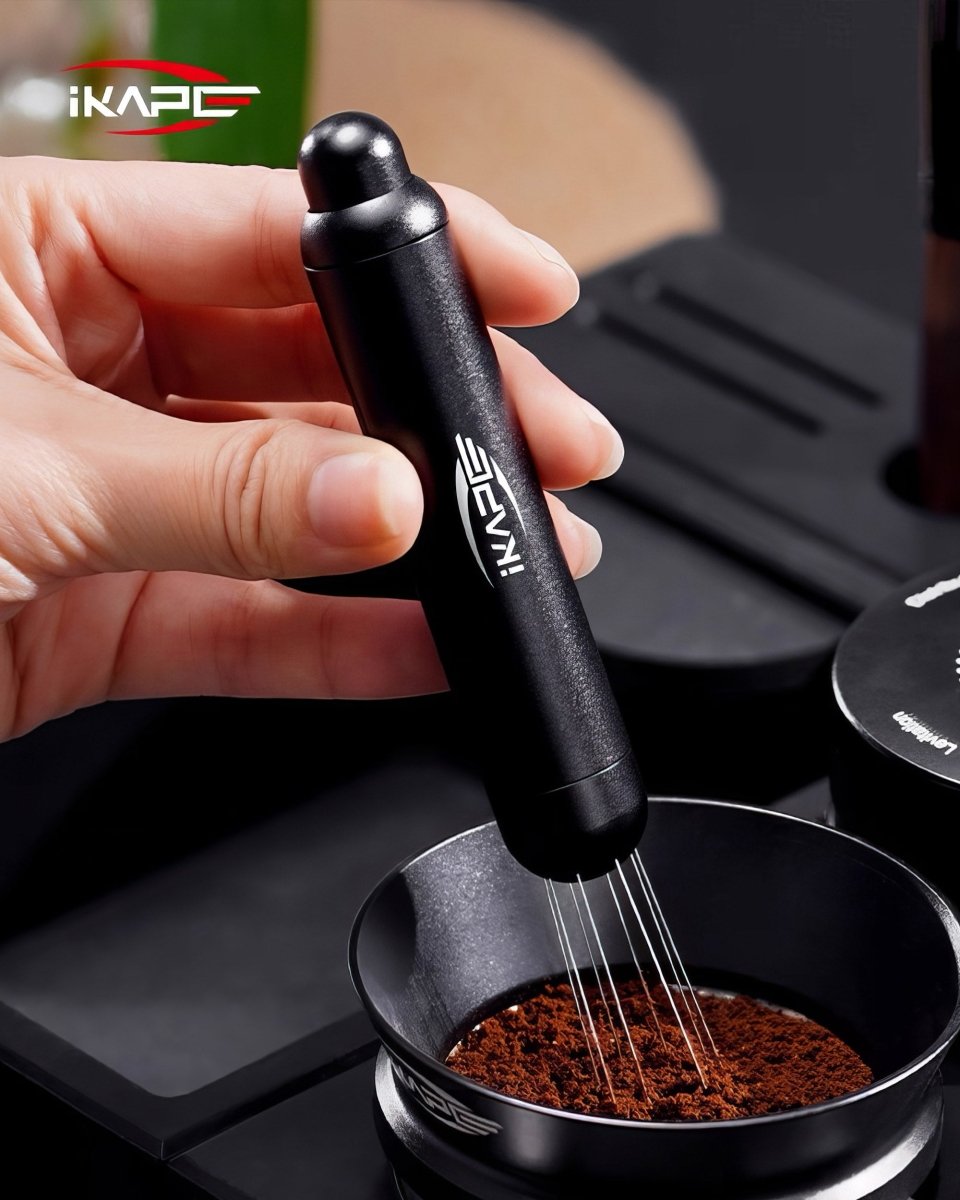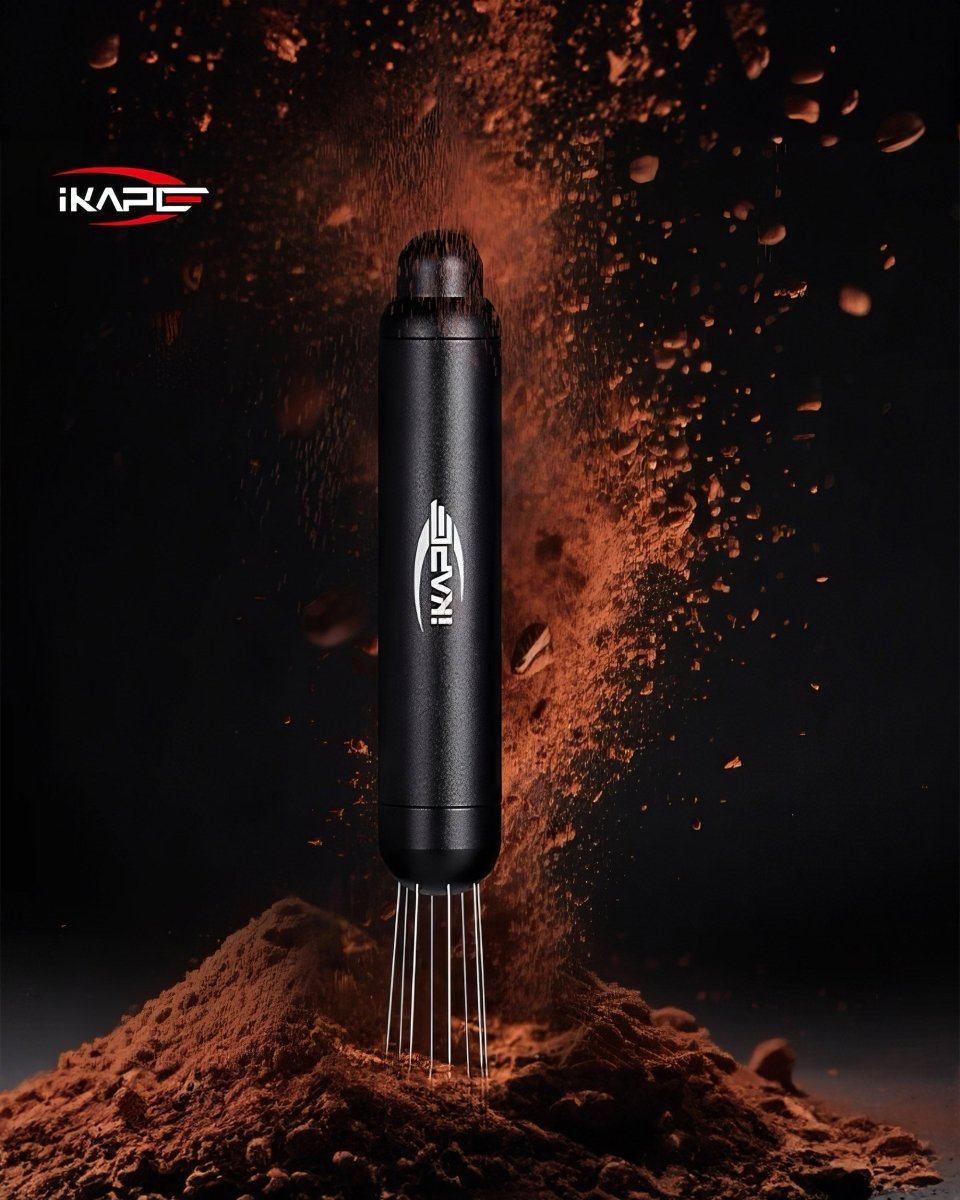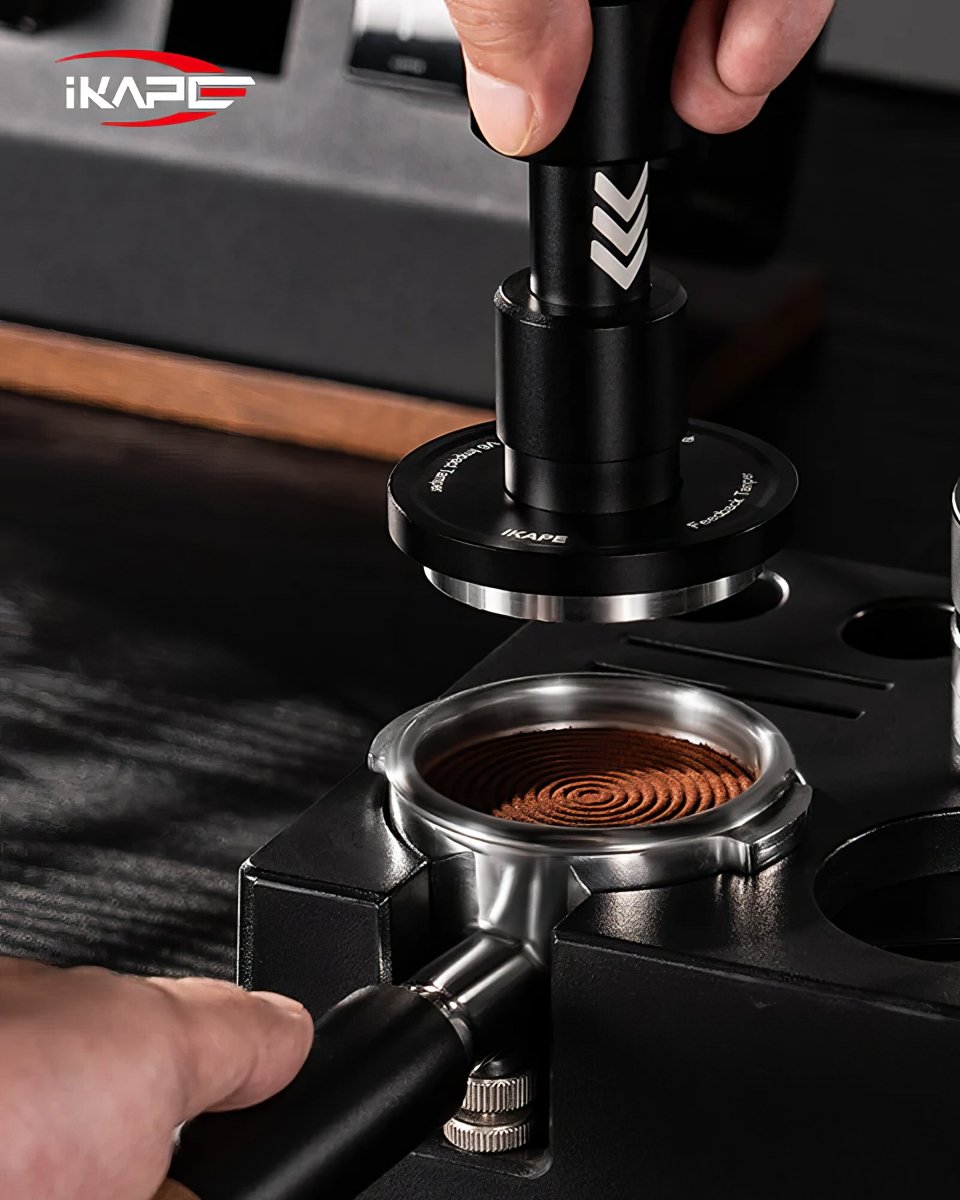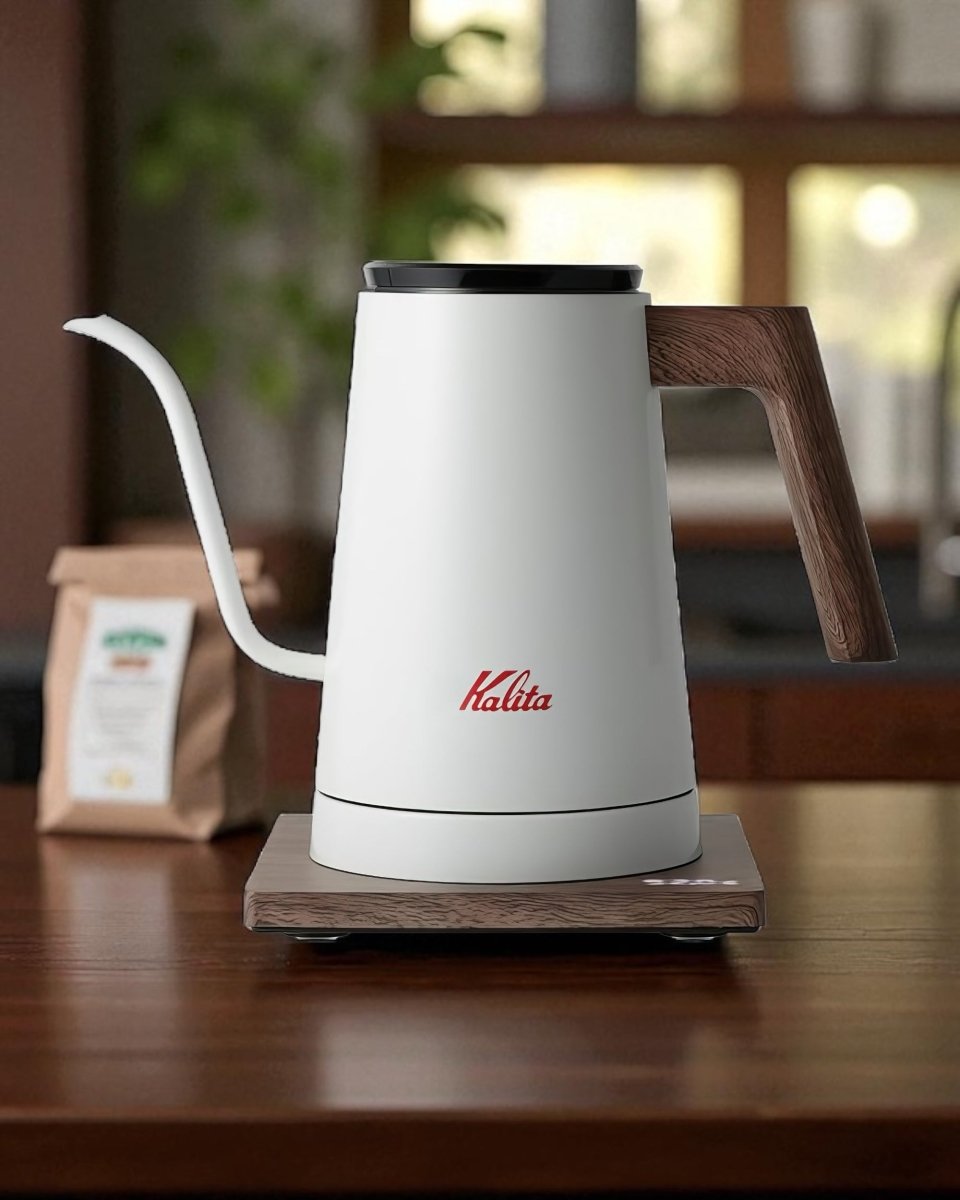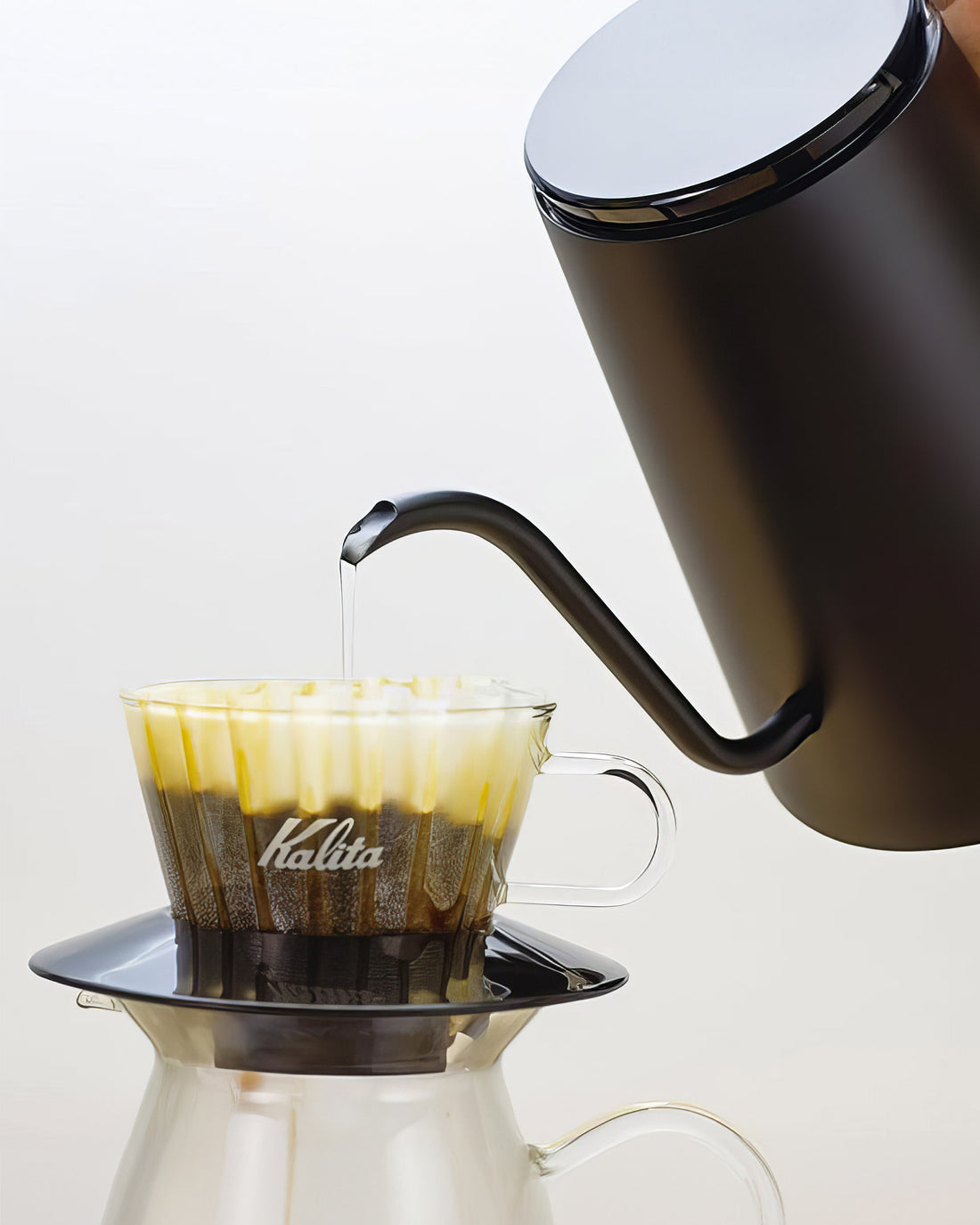Preface
As a coffee enthusiast, I originally just wanted to record my coffee journey on Instagram, but I didn’t expect to attract so many like-minded friends. With daily sharing of hand-brewed coffee and experiences in running a coffee website, I often receive inquiries about choosing a coffee grinder. Whether they are beginners or experienced coffee friends, everyone feels confused about which coffee grinder to choose.
To answer everyone's questions, I decided to shoot this video to share my thoughts. Although the production of the video may not be professional enough, and the text draft may also appear a bit messy, I hope to share my experience with more coffee lovers through this platform, and at the same time leave a record of this journey for myself.

Basic Introduction to Coffee Grinders
For friends who are just starting to get into hand-brewed coffee or espresso, a coffee grinder is an indispensable tool. Before a barista prepares a perfect cup of hand-brewed coffee or espresso, the first step is to grind fresh coffee beans into coffee powder.
Why can't we use pre-ground coffee powder directly? This is because coffee beans oxidize rapidly after grinding, leading to the loss of flavor and aroma. Therefore, many coffee shops grind the beans right before brewing to ensure the quality of each cup of coffee.
A high-quality coffee grinder not only provides stable grinding results but also affects the particle size of the coffee powder, thereby influencing the flavor and aroma during extraction. This explains why there are so many different types of coffee grinders on the market. If we have the opportunity in the future, we can explore this topic in depth, but today we will return to the main theme of this sharing—1Zpresso coffee grinders.


Key Factors in Pursuing a Quality Coffee Grinder
In my interactions with consumers, coffee enthusiasts, and my own daily experiences, several core points are often considered when choosing a hand-cranked coffee grinder:
First is the cost-performance ratio. Most people are not willing to invest five or six thousand dollars to buy their first coffee grinder. If you are an exception, congratulations, your financial situation is quite good!
Next is the convenience of use. Some friends find that after purchasing a hand-cranked coffee grinder, the grinding process is very laborious, not only difficult to exert force but also quite troublesome to clean.
The third important point is naturally the quality of the grinding results. The uniformity of the coffee powder, aroma, flavor, and sense of layers must reach a certain standard. Some friends even have extremely high requirements for the precision of the grinder's burrs. After getting a new machine, their home seems to turn into a scientific laboratory with various meticulous tests.
Based on the above reasons, I chose the 1Zpresso brand and wanted to share its advantages with everyone, hoping to introduce more people to the world of hand-brewed coffee. This process is not only endlessly fun but also made me develop a deep love for this brand.

Operating Principle of Coffee Grinders
Before diving deeper into the discussion, let's first understand the basic operating principle of a coffee grinder.
The core component of most hand-cranked coffee grinders on the market is the burr located in the middle. When the burr rotates, it uses its edges to cut and grind the coffee beans. Therefore, it can be said that the burr is the key to the entire grinder. Some people have described that the larger the burr, similar to the CMOS sensor of a camera, the better the effect.
However, as the burr size increases, the required force also increases. Therefore, in the field of hand-cranked coffee grinders, the burr size usually ranges between 30mm and 64mm. After all, no one wants to need both hands to lift a 10-kilogram weight while manually grinding.
The grinding process is as follows: first, put the coffee beans into the bean hopper of the grinder, then rotate the handle clockwise. At this time, the central shaft will rotate with the handle, driving the burr at the end to operate. During the rotation, the burr cuts the coffee beans, and the ground coffee powder passes through the regulator to adjust the coarseness and finally falls into the powder receiver.
This is the grinding process we often see. Of course, if we want to go deeper, some coffee enthusiasts even use measuring tools to check the particle size distribution of the coffee powder, which is indeed a more advanced topic. But today, let's start with the basic grinding principles.



The Evolution and Convenience of External Adjustment Blade Design
In the past few years, the application of external adjustment blade design in grinders was relatively rare. Taking the German classic brand Comandante C40 as an example, early grinders mostly adjusted the blade internally, requiring users to disassemble the machine to make adjustments. However, with technological advancements, brands like Mazzer, 1Zpresso, and Timemore have gradually moved the adjustment mechanism to the exterior of the machine in recent years. This not only enhances operational convenience but also improves the product's aesthetics.
One of the advantages of using an external adjustment blade design is that your hands no longer get covered in coffee grounds during adjustments, making the process cleaner and more efficient. After personally experiencing it, I found that this design indeed makes the daily grinding process much easier and more convenient. In the past, I had to constantly adjust the grinder based on different coffee bean conditions, frequently washing my hands in between. Now, I can easily adjust it externally without the need for repetitive disassembly. This convenience not only improves usage efficiency but also makes the coffee-making process more enjoyable.


Why Choose the 1Zpresso Coffee Grinder?
When I chose the 1Zpresso grinder, it might have been because I have a certain preference for its appearance. The design of this grinder makes me feel very satisfied, especially its external adjustment blade, which is particularly attractive to me. As I mentioned before, if it's inconvenient to frequently leave your workstation while working, saving even a second is valuable. Additionally, the grinding quality of the 1Zpresso grinder is quite stable, which is also one of the main reasons I chose this brand.

1Zpresso Grinder Models and Features Introduction
If you are familiar with 1Zpresso grinders, you will know that this brand has launched many different models. Today, we will focus on introducing six of them:
- 1Zpresso QS2
- 1Zpresso X-Pro S
- 1Zpresso X-Ultra
- 1Zpresso J MAXS
- 1Zpresso ZP6
- 1Zpresso K-Ultra

First of all, let me talk about their differences. Although 1Zpresso has launched many models, I believe some of the positioning between certain models is somewhat overlapping. If you are considering purchasing a 1Zpresso grinder, you only need to pay attention to the following three models:
- 1Zpresso QS2
- 1Zpresso ZP6
- 1Zpresso K-Ultra

Regarding other models, I believe their positioning indeed has some overlaps and even some awkwardness. Next, I will explain in detail the features of these three models.
Positioning and Differentiation of 1Zpresso X-Ultra and 1Zpresso X-Pro S
The positioning of the X-Ultra and X-Pro S grinders is very similar, with prices around 1,000 HKD. Both are equipped with an external adjustment blade design. For specific parameters of these models, you can easily find detailed information online, more comprehensive than what I can provide. However, today, I mainly want to share the user experience.
Friends who buy these two grinders usually lean towards manual brewing coffee. In terms of user experience, both grinders perform well, producing clean coffee grounds with a pleasant mouthfeel. However, for an additional cost of about 200 to 300 HKD, you can upgrade to the ZP6, which offers a similar user experience to the C40, producing cleaner coffee grounds and costing only about one-sixth of the C40, with noticeable performance improvements. Therefore, I quickly abandoned the X-Ultra and X-Pro S.
If these two grinders are used in an office, there is no problem because they are equipped with a foldable handle, which saves space. However, if used in other scenarios, this advantage is not very apparent. Of course, if you like their appearance, you can choose them as you wish. However, from the perspective of grinding results and drinking experience, I lean more towards choosing the ZP6, which makes the positioning of the X-Ultra and X-Pro S somewhat awkward.

1ZPresso X-Ultra Hand Grinder:
Details: 1Zpresso X-Ultra Hand Grinder: The Perfect Companion for Office and Travelers | Coffee Stage (mycoffeestage.com)
1ZPresso X-Pro-S Hand Grinder:
Details: 1zpresso X-Pro-S Hand Grinder - The Perfect Start for Every Cup of Coffee | Coffee Stage (mycoffeestage.com)
1Zpresso J MAX: Is It the Choice for Grinding Espresso?
Next, let's talk about the 1Zpresso J MAX. Compared to the previously mentioned manual coffee grinders, this model is more inclined towards espresso. If your budget is slightly more ample, for just a few hundred HKD more, you can upgrade to the K-Ultra, which can grind both manual brew coffee and espresso, offering an excellent user experience with relatively fast grinding speed.
However, the problem with the J MAX lies in that it requires more force to use each time, and prolonged use might cause hand fatigue. Despite this, the grinding results of this grinder still perform well in terms of flavor and aroma. But considering there are more attractive options like the K-Ultra, I find the positioning of the J MAX somewhat awkward. It is indeed a good grinder, but given its price is not much different from higher-end models, just a bit more budget can get you a better user experience.
Therefore, my review of these three grinders will be relatively brief because their market positioning seems somewhat overlapping.


1ZPresso J MAXS Italian Hand Grinder:
Details: 1zpresso J MAXS Italian Hand Grinder | Coffee Stage (mycoffeestage.com)
1Zpresso Q2s: Why It Became the First Choice for Office Workers and Camping Enthusiasts
Now we come to the highlight—1Zpresso QS2. This grinder is priced around 700 HKD in Hong Kong. Within this price range, there are many options on the market, such as the recently launched Timemore S3, which I believe performs similarly to these two products.
However, if you particularly love the 1Zpresso brand and often need to carry a grinder out, for example, for travel, work, or camping, then the QS2 is definitely the first choice. When I first got this grinder, my first impression was its very compact size, almost the same size as my palm.
Despite its small size, the coffee flavor and aroma it grinds out are still satisfying. Within the price range of less than 1,000 HKD, the performance of the QS2 is already acceptable, even though its error rate is slightly low, but the technical improvements can make up for this. However, if you mainly use the grinder at home, I recommend considering upgrading to a higher-end product, which can solve the problem once and for all and save money in the long run.
Moreover, the QS2 has another advantage; when used in an office, even if it accidentally falls and breaks, it won't make you feel too heartbroken. Therefore, if you like to manually brew coffee when you are out, the 1Zpresso QS2 is definitely a choice worth considering.


1ZPresso QS2 Hand Grinder:
Details: 1zpresso Q2S Hand Grinder: Portable and Convenient, Ideal Choice for Coffee Lovers | Coffee Stage (mycoffeestage.com)
1Zpresso ZP6: The Most Cost-effective Choice Among Hand Grinders?
Now let's talk about the 1Zpresso ZP6. This grinder is one of the most representative products of the 1Zpresso brand, the other being the 1Zpresso K-Ultra. Let's focus on the ZP6 first.
The impression I get from the ZP6 is that it is a highly cost-effective alternative to the C40. Its performance is about 80-90% of the C40, but the price is only 50-60% of it, making it an ideal entry-level choice for coffee enthusiasts. The coffee ground by this grinder has a clean taste and rich aroma. Although there may be some fine powder, it is within an acceptable range.
Some friends may not be very familiar with the C40. The C40 is a grinder under the German brand Comandante, which is highly renowned worldwide. Basically, every coffee lover will own a C40 because it can consistently grind clean, aromatic, and smooth coffee grounds. Whenever new coffee beans appear, the C40 is almost an indispensable tool. Therefore, many coffee lovers will have one at home. If I have the opportunity, I will introduce this product in more detail.
In daily manual coffee brewing, the ZP6 performs quite well. However, some friends have asked me if it can be used for espresso machines. I have tried it before, and although the ZP6 can indeed grind fine enough for espresso, the flavor is relatively simple and slightly chaotic, making it not very comfortable to drink. Therefore, I think the ZP6 is more suitable for manual coffee brewing, while it is slightly lacking in the espresso aspect.
Compared to the C40, the ZP6 is slightly loose during the grinding process, but the grinding time is relatively longer. In addition, since the handle of the ZP6 cannot be folded, it takes up some space when stored, and care is needed to avoid the handle hitting and causing the grinder to fall.
Overall, at a price close to 1000 HKD, I think the ZP6 is a fairly worth-trying choice. This product scored very high in my review, and interested friends might as well give it a try.



1ZPresso ZP6 Hand Grinder Special Edition:
Details: 1zpresso zp6 Special Edition Grinder - Professional Hand Grinding Precision | Coffee Stage – Coffee Stage (mycoffeestage.com)
1Zpresso K-Ultra: Why Is It One of My Favorite Grinders?
Finally, I want to introduce the 1Zpresso K-Ultra, which can be said to be one of my favorite grinders.
The K-Ultra combines many advantages: excellent user experience, easy to clean, the coffee ground has a rich flavor and comfortable mouthfeel, and it has a high fault tolerance. Most importantly, this grinder is suitable for both espresso and manual brewing. Considering its cost-effectiveness in the mid-thousand price range and its convenient storage features, I think the K-Ultra is one of the best-performing grinders in this brand. Therefore, I almost have no criticism for the K-Ultra.
First of all, what many people are most concerned about is the flavor performance. If the ZP6's flavor tends to be clean and clear, then the K-Ultra emphasizes layering, aftertaste, and thickness even more. To use an analogy, using the ZP6 feels like you're eating an orange, you can clearly feel the freshness of the juice and pulp; while using the K-Ultra, you can not only taste the juice and pulp but also feel a bit of the orange peel's slight bitterness, making the overall mouthfeel richer. This flavor might vary from person to person; some might find it too complex, but for me, this is exactly what I like.

In terms of user experience, the K-Ultra also performs excellently. Besides the convenient crank handle, its grinding speed is also very fast. For example, for 20 grams of coffee beans, using the C40 might take 1 to 2 minutes, while the K-Ultra can complete it in about 30 seconds, which is astonishingly fast. Additionally, although it requires a certain amount of force, the overall feeling is still relatively easy. However, prolonged use may cause some fatigue in the arms, which is something to be aware of. Even so, I still really love this grinder.

The K-Ultra is also very convenient in terms of cleaning, as it uses a magnetic powder catch tray. You only need to lightly brush the edges with a cleaning brush, and the coffee grounds will fall off smoothly. In comparison, the rotary design of the ZP6 often causes coffee grounds to get stuck at the junction, making cleaning troublesome, which is nearly intolerable for someone like me with OCD tendencies. Therefore, the magnetic powder tray design of the K-Ultra makes me very satisfied, as it can be cleaned with just one sweep.
As for the K-Ultra's performance in making espresso, I believe it is competent, but don't expect it to achieve extremely high flavor performance. Similar to the JMAX, because espresso requires higher precision for the burrs, the K-Ultra still has a lot of room for improvement in this area. Therefore, although it can handle the grinding work for espresso, the flavor performance is not as outstanding as hand-brewed coffee. In the future, I may share more insights on this aspect with everyone.

1ZPresso K-Ultra Hand Grinder:
For more details, please visit: 1zpresso K-Ultra Hand Grinder - Precision Grinding, The Perfect Choice for Hand-brewed Coffee – Coffee Stage (mycoffeestage.com)
Conclusion
The above is my sharing about these six 1Zpresso grinders. I hope this information can help you in choosing a grinder. If it were you, how would you choose? Would you consider the 1Zpresso brand, or are there other better options? Feel free to leave a comment below and let me know your thoughts. If you have friends who are considering buying a grinder, feel free to share this article with them, I believe it will be helpful to them. If you like this sharing, don't forget to follow us for more content. That's all for now, see you next time!
For recommendations or previous articles on various 1Zpresso grinders, you can refer to:
Selection Guide for Premium Hand Grinders: 1Zpresso Grinder Experience Sharing – Coffee Stage (mycoffeestage.com)



